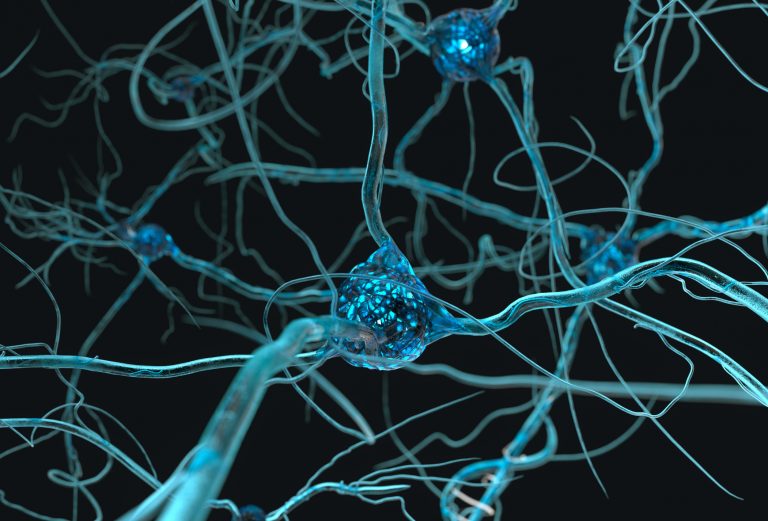
Researchers at the Brain Mind Institute of the École Polytechnique Fédérale de Lausanne (EPFL) say they identified an enzyme that can open the door to developing a new route of treatment for Huntington’s Disease.
The kinase enzyme, called TBK1, plays a central role in regulating the degradation and clearance of the huntingtin protein and introduces chemical modifications that block its aggregation, according to the team working in the lab of Hilal Lashuel, PhD. Their study “TBK1 phosphorylates mutant Huntingtin and suppresses its aggregation and toxicity in Huntington’s disease models” appears in The EMBO Journal.
Huntington’s disease is an autosomal dominant disease and a progressive and aggressively debilitating brain disorder that causes uncontrolled movements, psychological problems, and loss of cognition. It is caused by a mutation in the gene that encodes the protein huntingtin, causing it to build an abnormally long tail of the amino acid glutamine. This tail prevents huntingtin from folding properly and as a result it aggregates inside neurons of the brain, and eventually kills them.
Previous studies have shown that artificially adding phosphate groups to huntingtin can stop it from aggregating and causing Huntington’s disease.
“However, to explore the therapeutic potential of phosphorylation, we needed to identify the natural kinases that do the job inside the cell,” notes Lashuel. “After screening hundreds of kinases, we were excited to identify TBK1, because it did the job with high specificity and efficiency.”
“Phosphorylation of the N‐terminal domain of the huntingtin (HTT) protein has emerged as an important regulator of its localization, structure, aggregation, clearance and toxicity. However, validation of the effect of bona fide phosphorylation in vivo and assessing the therapeutic potential of targeting phosphorylation for the treatment of Huntington’s disease (HD ) require the identification of the enzymes that regulate HTT phosphorylation,” write the investigators.
“Herein, we report the discovery and validation of a kinase, TANK ‐binding kinase 1 (TBK 1), that efficiently phosphorylates full‐length and N‐terminal HTT fragments in vitro (at S13/S16), in cells (at S13) and in vivo.”
“TBK 1 expression in HD models (cells, primary neurons, and Caenorhabditis elegans ) increases mutant HTT exon 1 phosphorylation and reduces its aggregation and cytotoxicity. We demonstrate that the TBK 1‐mediated neuroprotective effects are due to phosphorylation‐dependent inhibition of mutant HTT exon 1 aggregation and an increase in autophagic clearance of mutant HTT.”
“These findings suggest that upregulation and/or activation of TBK 1 represents a viable strategy for the treatment of HD by simultaneously lowering mutant HTT levels and blocking its aggregation.”
The researchers found that, when TBK1 adds a phosphate group anywhere in the first 17 amino acids of huntingtin, it inhibits its ability to aggregate. This was the case for both the normal and mutated versions of huntingtin.
In addition, increasing TBK1 levels in cells leads to over-phosphorylation of a specific amino acid (a serine) in the huntingtin chain. This stabilizes the protein and stops it from aggregating.
Finally, TBK1 was also found to signal the cell to degrade and clean out huntingtin before it aggregates. This lowers overall huntingtin levels, which results in reducing aggregate formation inside the cell.
Encouraged by their findings, the scientists then moved onto an animal model of Huntington’s Disease: the worm C. elegans. What they found corroborated their previous data: Over-expressing the TBK1 kinase protected against mutant huntingtin toxicity in the worm, preventing the development of Huntington’s Disease. The researchers got similar results in cultured neurons.
“Our work shows that TBK1-mediated increase in phosphorylation and/or promoting mutant huntingtin autophagic clearance represent viable therapeutic strategies for the treatment of Huntington’s Disease,” points out Ramanath Hegde, PhD, who led the study.













